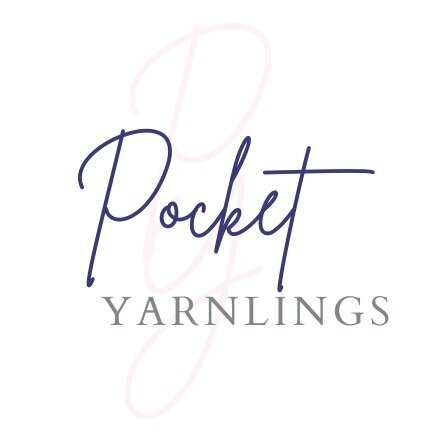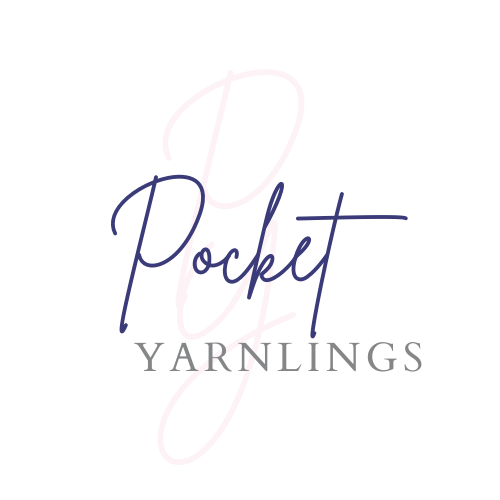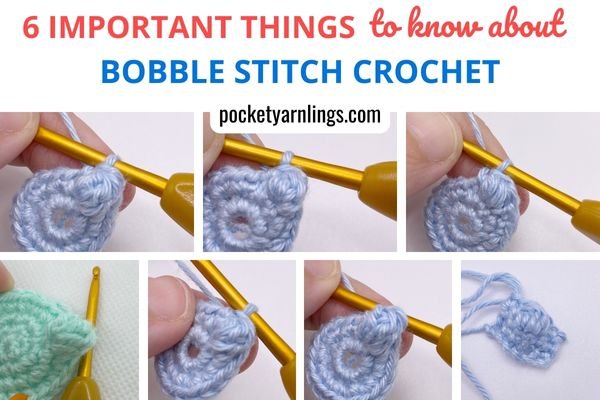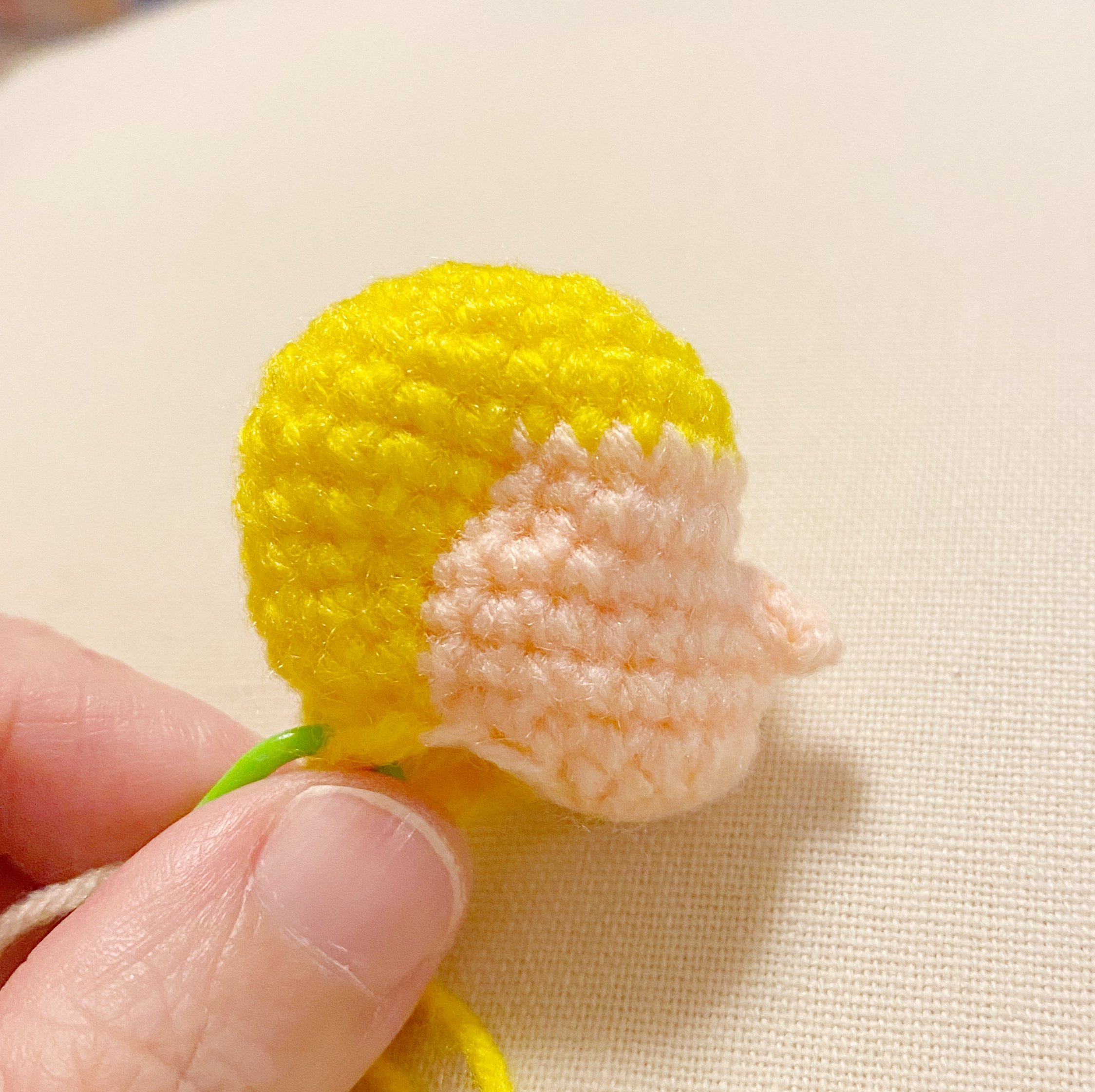8 Atypical Things about How to Crochet Cluster Stitch
The cluster stitch in crochet is a technique where multiple incomplete stitches are worked together to form a cluster, creating a textured and raised effect. These stitches are often grouped together in the same stitch or space, producing a decorative element that adds depth and visual interest to crochet projects.
They are commonly used for creating unique patterns, adding dimension to blankets, scarves, and various other crocheted items, and shaping fabric by decreasing stitch counts in specific areas. I have used it to shape different aspects of my amigurumi including chins, jaws, animal bodies and many more ways!
Cluster stitches can be so confusing because there are so many different versions to doing it and there is not much uniformity across the board. I tried researching on all the different ways to create a crochet cluster and this is the best that I have come up with. To be extremely honest, the most important thing at the end of the day, is not the term “cluster stitch” but figuring out what the pattern designer intended in their pattern, and then carrying it out.
Table of Contents Show
What is a cluster crochet stitch?
A cluster stitch in crochet refers to a group of stitches worked together into the same stitch or space to create a specific texture or pattern. Unlike a traditional stitch where you complete each stitch separately, cluster stitches are made by partially crocheting several stitches into one base, leaving the final step incomplete, and then finishing all the stitches together at once.
What are cluster crochet stitch abbreviations?
The abbreviations for cluster stitches in crochet patterns can vary slightly based on the designer or pattern. The commonly used abbreviations include dc cl for double crochet cluster, sc cl for single crochet cluster and hdc cl for half double crochet cluster.
These abbreviations might vary slightly depending on the specific pattern or designer, so it's always a good idea to check the pattern's instructions or stitch guide for the exact abbreviations used in that particular pattern.
What does CL mean in crochet?
In crochet patterns, "CL" usually stands for "Cluster." The CL abbreviation indicates that you should work a cluster stitch as specified in the pattern instructions. Always refer to the pattern's instructions or stitch guide for precise details on how to work the cluster stitch indicated by "CL."
What is a DC CL?
"DC CL" in crochet typically stands for "Double Crochet Cluster." This term indicates that you're expected to work a cluster of double crochet stitches together in the same stitch or space according to the pattern's instructions.
The exact method for creating a double crochet cluster can vary based on the pattern's specifications, which might include the number of double crochet stitches grouped together and the manner in which they're worked and closed off as a cluster.
How do you do cluster stitch in crochet?
There is quite a lot of differing opinions about crocheting cluster stitches unfortunately. I was also confused about this for a long time and went around researching. Fortunately or unfortunately, it really depends finally on what the pattern designer wants so remember to check the initial terminology.
For cluster stitches, some crocheters choose the do the cluster stitches in the SAME stitch, while other do the cluster stitch in multiple consecutive stitches and joining them up together at the top, much like you would for a double crochet decrease.
To be extremely honest, personally I have been crocheting cluster stitches like they are double crochet decreases, which is probably not right! Here I have laid out the steps for a double crochet cluster stitch, which is the most commonly used form of cluster stitch.
Double crochet cluster stitch involves the following steps.
1. Yarn over the hook before inserting the hook.
2. Insert your hook into the desired stitch.
3. Yarn over again, pull yarn through the stitch.
4. Yarn over, draw through 2 (of 3) loops, should have 2 loops on the hook.
5. Yarn over again, insert hook into SAME stitch.
6. Yarn over, pull yarn through the stitch, should have 4 loops on the hook.
7. Yarn over, draw through 2 (of 4) loops, should have 3 loops left on the hook.
8. Yarn over for last time.
9. Draw yarn through all 3 loops on the hook.
What are the types of cluster crochet stitches?
There are various types of cluster stitches, and they can differ based on the number of stitches grouped together and the specific way they're worked. Common types include:
Double Crochet Cluster: Typically made by working incomplete double crochet stitches (or other variations) into the same stitch or space and then completing them together, usually by pulling through all loops on the hook at once.
Treble Crochet Cluster: Involves using treble crochet stitches in a cluster formation.
Single Crochet Cluster: This is the part that differs a bit from dc and tr crochet clusters and appears more like a single crochet decrease. I will cover more on this below.
Half-Double Crochet Cluster: In some situations, this is more like a half double crochet decrease or in other cases, more like a puff stitch. Read on below for details.
The number of stitches and the manner in which they're grouped or worked together can vary depending on the pattern's instructions and the desired texture or design element you want to achieve. It is very important to see finally what the intended outcome is for the pattern designer, so follow the terminology at the beginning of the pattern closely.
How to do a single crochet cluster?
Like I mentioned above, I have researched around and the common consensus is that single crochet cluster stitch (which is not often used and named accordingly) follows along like a single crochet 3 together stitch (sc3tog1) or similar larger clusters. This differs from the double crochet cluster stitch which is mentioned below because it involves a reduction in stitches. The steps are as follows:
Let's go through the steps involved in making a 3 single crochet decrease.
1. Insert hook into desired stitch.
2. Yarn over, pull loop through stitch, should have 2 loops on hook.
3. Insert hook into the next stitch.
4. Yarn over, pull loop through stitch again, should have 3 loops on hook.
5. Insert hook into the next stitch for the last time.
6. Yarn over, pull loop through stitch for last time, should have 4 loops on hook.
7. Final yarn over and draw yarn through all the 4 loops on the hook.
You have decreased 3 stitches down to just 1 stitch, forming a 3 single crochet decrease!
For the most part, if I choose to crochet steps like this, the pattern terminology I’m more likely to write sc3tog1 rather than sc cl and I would state clearly in my initial legend what are the steps involved. So, at the end of the day, checking out the pattern instructions is more important than just reading the stitch terms.
How to do a half double crochet cluster stitch?
For a half double crochet cluster stitch, there seems to be some disparity among designers what is the sequence of steps and there is no uniform consensus across the board. Most pattern designers would do half double crochet cluster stitch like a half double decrease across multiple stitches. Some would choose to do it in the same stitch, which actually ends up appearing like a puff stitch. Like a single crochet cluster stitch, this is not as often used as a double crochet cluster stitch and also not commonly named as such. So for the steps involved in a decrease in half double crochet stitch:
1. Yarn over before inserting hook.
2. Insert hook into desired stitch, yarn over and draw up a loop, should get 3 loops on hook.
3. Then yarn over again, insert hook into the next stitch.
4. Yarn over and draw up a loop again, should have 5 loops on hook.
5. Yarn over for a final time, then pull the yarn through all 5 loops on the hook, to get final hdc2tog1.
On the other hand, for a puff stitch, the steps are the following:
Yarn Over (YO): Start by yarn over (wrapping the yarn around your hook) before inserting your hook into the designated stitch or space.
Insert Hook: Insert your hook into the specified stitch or space where you want to create the puff stitch.
Yarn Over and Pull Through: Yarn over again and pull up a loop through the stitch. You'll have three loops on your hook.
Repeat Yarn Over and Pull Through: Yarn over once more and pull another loop through the same stitch. This action creates more loops on your hook. Repeat this step a few times, depending on the pattern's instructions, typically between 3 to 5 times.
Yarn Over and Pull Through All Loops: After creating the required loops on your hook, yarn over and pull through all the loops on the hook at once, securing them together.
Most pattern designers would put the stitches as either a half double crochet decrease or as a puff stitch, rather than a half double crochet cluster stitch. So always refer to the pattern's guidance for precise details on how to create a half-double crochet cluster in your crochet project.
How do you do a double crochet cluster?
There is quite a lot of differing opinions about crocheting cluster stitches unfortunately. I was also confused about this for a long time and went around researching. Fortunately or unfortunately, it really depends finally on what the pattern designer wants so remember to check the initial terminology.
For cluster stitches, some crocheters choose the do the cluster stitches in the SAME stitch, while others do the cluster stitch in multiple consecutive stitches and joining them up together at the top, much like you would for a double crochet decrease.
There is more on the differences for double crochet decrease and double crochet cluster stitch here in this article, '15 different detailed Ways on How to Decrease in Crochet'.
To be extremely honest, personally I have been crocheting cluster stitches like they are double crochet decreases, which is probably not right! Here I have laid out the steps for a double crochet cluster stitch.
Double crochet cluster stitch involves the following steps:
1. Yarn over the hook before inserting the hook.
2. Insert your hook into the desired stitch.
3. Yarn over again, pull yarn through the stitch.
4. Yarn over, draw through 2 (of 3) loops, should have 2 loops on the hook.
5. Yarn over again, insert hook into SAME stitch.
6. Yarn over, pull yarn through the stitch, should have 4 loops on the hook.
7. Yarn over, draw through 2 (of 4) loops, should have 3 loops left on the hook.
8. Yarn over for last time.
9. Draw yarn through all 3 loops on the hook.
How to make a treble cluster in crochet?
To crochet a treble crochet cluster (TR cl) stitch, follow these steps:
Yarn Over Twice (YO twice): Wrap the yarn around your hook twice.
Insert Hook: Insert your hook into the specified stitch or space.
Yarn Over and Pull Through: Yarn over and pull up a loop through the stitch. You'll have four loops on your hook.
Yarn Over and Pull Through Two Loops: Yarn over and pull through the first two loops on the hook. You'll have three loops remaining on the hook.
Yarn Over and Pull Through Two Loops: Yarn over and pull through the first two loops on the hook again. You'll have two loops remaining on the hook.
Repeat again, yarn over twice before inserting hook back into SAME stitch, then yarn over and pull up a loop.
Repeat Partial Stitches: Yarn over and pull through the first two loops on the hook. Repeat this process again and pull through next two loops. You have done 2 incomplete treble crochet stitches.
For a treble crochet cluster, you'll usually work several incomplete treble crochet stitches (more than two) in the same stitch or space.
Final Yarn Over and Pull Through: After completing all the partial treble crochet stitches, yarn over and pull through all the remaining loops on the hook to close the cluster stitch.
Always refer to the pattern's guidance for precise details on how to create a treble crochet cluster in your crochet project, as the number of partial treble crochet stitches and the method of closing them into a cluster may vary based on the specific pattern instructions.
Free Amigurumi Shaping Starter Guide
Learn how to create a toy for your child with your own hands in 5 simple steps.
Special stitches similar to cluster stitches
Here are some special crochet stitches that are pretty similar to cluster stitches but with distinct differences in steps involved and final appearances. Here we will be talking about bobbles stitches, popcorn stitches, puff stitches and decreases in double crochet stitches.
What is the difference between a cluster stitch and a bobble stitch?
Cluster stitches involve working multiple incomplete stitches together into the same stitch or space while bobble stitches are comprised of a group of completed stitches worked consecutively into the same stitch or space. The final appearance of a cluster stitch is textured but flatter, while for a bobble stitch, they tend to be more puffy or raised.
To find out more about bobble stitches, check out this article on “6 important things to know about Bobble Stitch Crochet”.
Is popcorn stitch same as cluster stitch crochet?
The popcorn stitch is formed by working a set number of stitches in the same stitch and then joined at the top and secured to the previous row, forming a raised conical shape, while a cluster stitch involves grouping multiple incomplete into the same stitch and finally forming a flatter textured effect at the end.
To find out more about popcorn stitches, check out this article on “6 unmissable steps on How to do a Popcorn Stitch in Crochet”.
Is cluster stitch same as a double crochet decrease?
The steps involved in a crochet cluster stitch are mentioned above. For step 5 for a dc cluster stitch, where it says yarn over again, insert hook into SAME stitch, this is the part that differs from the steps involved in a double crochet decrease below. As you can see below, step 5 below says yarn over again, insert hook into NEXT stitch.
This on the other hand, are the steps involved in a double crochet decrease:
1. Yarn over the hook before inserting the hook.
2. Insert your hook into the desired stitch.
3. Yarn over again, pull yarn through the stitch.
4. Yarn over, draw through 2 (of 3) loops, should have 2 loops on the hook.
5. Yarn over again, insert hook into next stitch.
6. Yarn over, pull yarn through the stitch, should have 4 loops on the hook.
7. Yarn over, draw through 2 (of 4) loops, should have 3 loops left on the hook.
8. Yarn over for last time.
9. Draw yarn through all 3 loops on the hook.
As you can see, a cluster stitch involves grouping multiple incomplete stitches in the SAME stitch, while a double crochet decrease involves combining MULTIPLE stitches across into the same stitch, resulting in a decrease in stitch count. Their primary purposes also differ: cluster stitches create a textured cluster, while double crochet decreases are used for stitch count reduction and shaping in crochet projects.
What is the difference between a cluster stitch and a puff stitch?
Like I mentioned above, there are some pattern designers who crochet a half double crochet cluster stitch like a puff stitch. But if we are comparing a double crochet cluster stitch which is what is more often used, the final appearance looks flatter while a puff stitch appears more pronounced and raised. The steps involved in a puff stitch are mentioned above and for a double crochet cluster stitch are above as well.
How to use a cluster stitch in amigurumi
There are many ways to use cluster stitches in amigurumi and it is surprisingly a stitch I use pretty often for shaping and contouring different parts of my amigurumi projects. For example, you could manipulate different sizes of cluster stitches to do doll facial shaping to make chins and cheeks. On the other hand, I have also used cluster stitches to shape amigurumi paws as well! Just use your imagination and if there are certain situations where you want to decrease some stitches in a round, consider using some variations of the cluster stitches above as well.
When incorporating cluster stitches, follow the pattern instructions or your design plan closely. Place the clusters in designated stitches or spaces as indicated. Always test the cluster stitch on a swatch or spare piece of crochet to ensure it fits well with your overall amigurumi design before applying it to your main project.
Conclusion of crocheting cluster stitches
Crocheting cluster stitches bring texture, depth, and intricate details to your creations. Whether used for shaping, adding texture, or creating unique patterns, clusters enhance the visual appeal of amigurumi. Experimentation with clusters empowers you to personalize designs, adding character and charm to your crochet work.
Free Amigurumi Shaping Starter Guide
Learn how to create a toy for your child with your own hands in 5 simple steps.
Related articles
How do you Crochet Different Shapes in Amigurumi?
14 useful things you need to know about How to Crochet a Circle
8 extraordinary ways on How to Crochet an Oval Pattern
How to Crochet a Tube in 10 different useful styles
6 unmissable steps on How to do a Popcorn Stitch in Crochet














